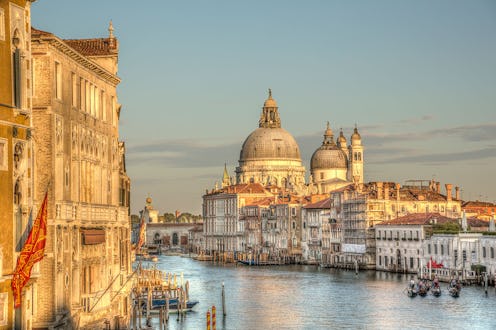There’s no denying the future is uncertain for many of the most magical places in the world and the extraordinary wildlife that inhabit them. With so many places, plants, mammals and marine animals endangered, it was difficult for us to narrow down those we think you should add to your bucket list. Instead, consider these to be a sampling of the myriad destinations worth both visiting and helping as 2017 comes to a close.
Sumatra and Borneo
Sumatra is an island in Western Indonesia, the sixth largest in the world. Nearby Borneo is the third largest. While these breathtaking islands are not themselves threatened, they've lost 50% of their rain forest (due largely to the palm oil boom) and are thus home to a number of endangered species including the Sumatran tiger, Sumatran orangutan, pygmy elephant, Sumatran rhino and more. Official figures show 70% of what remains of Indonesia's rain forests will be converted to palm or acacia plantations in coming years, with total destruction possible within two decades. For the myriad species who call these two islands home, this most certainly spells extinction. You can help by avoiding products containing palm oil whenever possible—here is a helpful resource for doing so.
The Great Barrier Reef
In 2015, Australia's Great Barrier Reef just barely escaped being listed as an endangered World Heritage Site and in July 2016, it was reported that 25% of the reef had been killed off by bleaching, a side effect of climate change. As reefs die, so do the ecosystems they support, which include the humans they both feed and protect (from waves). Some scientists think it's too late to save the reef, but for now there are still hundreds of miles of healthy reef to visit—when doing so, we suggest you inquire about local coral cleanup programs. For more information on the dire situation currently faced by the world's reefs, check out the Netflix documentary Chasing Coral here.
The Dead Sea
The next time you want to buy products boasting Dead Sea salts as among their ingredients, you may want to think twice. An increase in demand for these products and the use of the Dead Sea for its purported healing powers are among the reasons it's diminishing at an alarming rate. (The biggest culprit, however, is diversion of the Jordan River.) You can see a pretty dramatic map of this depletion since the 1970s here. Sinkholes have also become a huge problem for the Dead Sea area—in 1996 there were 200, whereas today there are more than 5,000. Jordan is working on a project that will link the Red Sea with the Dead Sea and in doing so save the latter, but some scientists say this scenario will have dire consequences for the environment. As such, we suggest you see the sea sooner rather than later.
Venice, Italy
UNESCO has threatened to place Venice on its list of endangered heritage sites unless Italy bans cruise ships by 2017, stating that "the capacity of the city, the number of its inhabitants and the number of tourists is out of balance and causing significant damage." Venice is threatened most significantly, however, by an increasing number of severe floods and, of course, the fact that it's sinking. It's too magical a place to miss out on seeing without having to dive in order to do so, and we suggest you add it to your list pronto.
The Galápagos Islands
We named the Galápagos to our travel bucket list in 2016, and there they remain in 2017. Charles Darwin's theory of evolution by natural selection was born here, and the islands are known for innumerable species that can be found nowhere else in the world. The Galápagos ecosystem is one of the most fragile in the world, however, and it's said to be intensely threatened by the effects of global warming. As in Australia, reefs are dying off and causing the loss of marine species, which is, in turn, affecting land populations. If you want to help, we suggest supporting NextGen Climate Action, which works to prevent climate disaster through politics.
The Maldives
If sea levels continue to rise, this island nation could be completely submerged in the span of 100 years. The situation is so dire that the government has purchased property in other countries for future settlement of misplaced residents. If you visit, be respectful of the islands' efforts to lead the way in sustainability by staying in an eco-friendly resort such as the Six Senses Laamu.
The Madagascar Rain Forest
92% of the mammals on Madagascar exist nowhere else in the world, and many of them face extinction due to deforestation—since 1950, 40 to 50% of the forest has been lost. Nearly 100 species are endangered or critically endangered, including several types of lemurs. If you love the little guys as much as we do and are therefore distressed by this information, you can donate to their preservation here.
